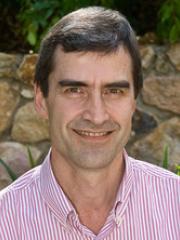Emeritus Professor Ian Gentle

Primary research interest
Energy materials
About me
I joined The University of Queensland in 1993 following postdoctoral positions at the Research School of Chemistry at ANU and at the University of New England. During 2008-2010 I was seconded to the Australian Synchrotron, Clayton, Victoria as Head of Science and returned full time to UQ in 2011. In 2013 I was appointed Associate Dean (Research) in the Faculty of Science, while continuing to lead my group in SCMB. In 2015 I was appointed Deputy Executive Dean, Faculty of Science.
Research focus and collaborations
Materials for energy storage
We are developing new materials for use as cathodes in high-energy rechargeable batteries, particularly lithium sulfur batteries, and supercapacitors. Materials developed so far show potential increases in energy density of 3-5x that of lithium ion batteries. In this work, funded by industry and State Government, we are working to continue increasing the capacity of Li-S batteries in a new purpose-built facility.
Understanding structure in organic photonic devices
(Collaboration with Prof Paul Burn (Centre for Organic Photonics & Electronics - School of Chemistry & Molecular Biosciences) and Prof Paul Meredith (Centre for Organic Photonics & Electronics -School of Mathematics and Physics)
Organic devices such as organic light emitting diodes, solar cells and sensors, are constructed using multiple layers of materials that perform different functions such as emitting light and charge transport. The interaction between these layers is very important and we study diffusion and structure at interfaces using such techniques as X-ray and neutron reflectometry.
Funded projects
- Australian Research Council Discovery Project 2014-2016
The crucial role of organic-inorganic interfaces in the performance of organic optoelectronic devices
Total value of grant: 390,000 - Australian Research Council Discovery Project 2012-2014
Diffusion: The key to performance in organic optoelectronic devices
Total value of grant: $700,000 (Co-Chief Investigators Paul Burn & Michael James) - Baosteel-Australia Joint Research and Development Centre (Industry-funded grant) 2012-2014
Advanced Materials for New Generation High Energy Storage
Total value of grant: $1,100,322 (Co-Chief Investigator Da-Wei Wang) - Queensland Sustainable Energy Innovation Fund 2012-2013
Ultrafast Durable High Energy Batteries
Total value of grant: $210,000 (Co-Chief Investigators Da-Wei Wang & Fouad Haghseresht)
Teaching interests
Featured publications
- Tonnelé, Claire, Stroet, Martin, Caron, Bertrand, Clulow, Andrew J., Nagiri, Ravi C. R., Malde, Alpeshkumar K., Burn, Paul L., Gentle, Ian R., Mark, Alan E. and Powell, Benjamin J. (2017) Elucidating the spatial arrangement of emitter molecules in organic light-emitting diode films. Angewandte Chemie - International Edition, 56 29: 8402-8406. doi:10.1002/anie.201610727
- McEwan, Jake A., Clulow, Andrew J., Shaw, Paul E., Nelson, Andrew, Darwish, Tamim A., Burn, Paul L.and Gentle, Ian R. (2016) Diffusion at interfaces in OLEDs containing a doped phosphorescent emissive layer. Advanced Materials Interfaces, 3 17: . doi:10.1002/admi.201600184
- Geng, Yan, Ali, Mohamad A., Clulow, Andrew J., Fan, Shengqiang, Burn, Paul L., Gentle, Ian R., Meredith, Paul and Shaw, Paul E. (2015) Unambiguous detection of nitrated explosive vapours by fluorescence quenching of dendrimer films. Nature Communications, 6 8240: . doi:10.1038/ncomms9240
